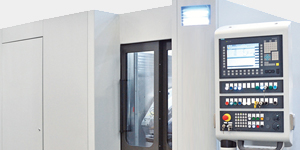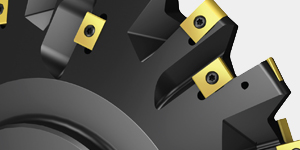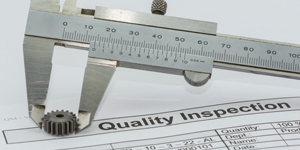Sir Issac Newton’s First Law of fundamental motion states that an object at rest stays at rest, and an object in motion stays in motion at a constant speed and direction, unless acted upon by a net force. Extrapolating this law, motion, if uninterrupted will continue in a straight line. Many times when building a machine, there is a need to “bend” this motion. For these situations, there are various gearing configurations that will accomplish this change in direction.
The most important consideration when changing direction in gearing is whether the speed ratio will also change. If the motion is to be redirected 90 degrees but the speed is not going to change, then there are two gear solutions. The most common solution for this type of application — where the speed and torque will not change but the motion bends— is to use miter gears.
Since miter gears are simply bevel gears which both have the same number of teeth, this configuration is preferred for this type of redirect (Figure 1). The gears are assembled such that they are in the same plane and their axes intersect. For straight tooth miter gears, standard radial bearings can be used in this assembly as the loading exists only in the radial direction.

If you select spiral miter gears, then there is a need to use axial bearings on the shafts as the spiral tooth form redirects some of the load into the axial direction. The advantage of spiral miter gearing over their straight-tooth cousins, is that the spiral tooth gears operate quieter, can handle higher torque loads, and can operate at higher speeds.
A second solution for this situation is to use cross axis helical gears aka screw gears (Figure 2). These gears are helical gears where the helix angle is set to 45 degrees and both gears have the same helix direction. When assembling two screw gears that have the same direction of hand, they will operate at 90 degrees. This pair does not have intersecting axes but does have axial loading similar to spiral miter gears. One advantage of screw gears is the ability to produce them on standard spur gear hobbing equipment.

When the requirement is to increase or decrease the speed while changing the direction of the motion there are additional options to consider. For low-speed ratios, typically ratios up to 3:1, the screw gear configuration offers the most flexibility. The ability to vary the number of teeth on either of the screw gears allows for very specific speed ratios. However, once the ratio gets above 3:1, space constraints usually dictate that a bevel gear combination is preferred (Figure 3). For straight tooth bevel gearing, the maximum practical speed ratio is 6:1.
Although the number of teeth on the pinion and the number of teeth on the bevel gear can vary in order to adjust the speed ratio, most applications keep the speed ratio of bevel gears to fixed values. These values are typically 2:1, 3:2, 3:1,4:1, 5:1, and 6:1. For spiral bevel gearing, the practical limit on speed ratio is 5:1. This is due to the tooth narrowing on the pinion of high index spiral bevel sets.

When the speed ratio needs to be higher than 6:1, then the preferred gearing solution is worm gearing (Figure 4). The assembly configuration for worm gearing is identical to screw gears in that they are non-intersecting gears. The worm portion of the set is always the input and is similar in design to that of a screw. The worm’s speed potential is dependent on the number of starts, or threads, developed on it. Worms can be single start, double start, triple start, or quadruple start. Each thread is always engaged with a separate gear tooth to be during one revolution of the worm wheel.
As such, a 60-tooth worm wheel that is cut to match a single lead worm will have an effective speed ratio of 60:1. If the worm wheel is cut to mate with a double start worm, then the speed ratio will be 60:2 or 30:1. Similarly, a triple start worm mated with the proper 60 tooth worm wheel will have an effective speed ratio of 20:1, and a quadruple worm mated to the proper 60 tooth worm wheel would have an effective speed ratio of 15:1. This change in the number of starts can effectively give multiple speed ratios using the same center distance.

The key piece of information regarding worm wheels is that their lead angle will change dependent on the number of starts it is designed to engage with. A worm wheel cut for a double start worm should not be mated with a single start worm. Since worm wheels can have upwards of 360 teeth, extreme ratios can be developed.
Each gearing solution detailed above fits a specific design requirement. Some gears are better suited for low-speed ratios and others can be used for large speed ratios. Since most applications change speeds in addition to direction, you must also consider the bearing needs for your application and the changes in output torque.























